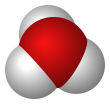
Back حمض الهيدرويوديك Arabic هیدرویدیک اسید AZB হাইড্রোআয়োডিক এসিড Bengali/Bangla Àcid iodhídric Catalan Kyselina jodovodíková Czech Asid hydroiodig CY Iodwasserstoffsäure German Jodida acido EO Vesinikjodiidhape ET هیدرویدیک اسید FA
| |||
| |||
| Names | |||
|---|---|---|---|
Other names
| |||
| Identifiers | |||
3D model (JSmol)
|
|||
| ChEBI | |||
| ChemSpider | |||
| EC Number |
| ||
PubChem CID
|
|||
| RTECS number |
| ||
| UNII | |||
| |||
| |||
| Properties | |||
| HI(aq) | |||
| Molar mass | 127.912 g·mol−1 (HI) | ||
| Appearance | colorless liquid | ||
| Odor | acrid | ||
| Density | 1.70 g/mL, azeotrope (57% HI by weight) | ||
| Boiling point | 127 °C (261 °F; 400 K) 1.03 bar, azeotrope | ||
| Aqueous solution | |||
| Acidity (pKa) | −9.3 (HI)[1] | ||
| Hazards | |||
| GHS labelling: | |||

| |||
| Danger | |||
| H314 | |||
| P260, P264, P280, P301+P330+P331, P303+P361+P353, P304+P340, P305+P351+P338, P310, P321, P363, P405, P501 | |||
| NFPA 704 (fire diamond) | |||
| Flash point | Non-flammable | ||
| Related compounds | |||
Other anions
|
|||
Related compounds
|
Hydrogen iodide | ||
Except where otherwise noted, data are given for materials in their standard state (at 25 °C [77 °F], 100 kPa).
| |||
Hydroiodic acid (or hydriodic acid) is a colorless liquid. It is an aqueous solution of hydrogen iodide with the chemical formula HI(aq). It is a strong acid, in which hydrogen iodide is ionized completely in an aqueous solution. Concentrated aqueous solutions of hydrogen iodide are usually 48% to 57% HI by mass.[2]

- ^ Perrin, D. D., ed. (1982) [1969]. Ionisation Constants of Inorganic Acids and Bases in Aqueous Solution. IUPAC Chemical Data (2nd ed.). Oxford: Pergamon (published 1984). Entry 32. ISBN 0-08-029214-3. LCCN 82-16524.
- ^ Lyday, Phyllis A. (2005). "Iodine and Iodine Compounds". Ullmann's Encyclopedia of Industrial Chemistry. Weinheim: Wiley-VCH. pp. 382–390. doi:10.1002/14356007.a14_381. ISBN 978-3527306732.




